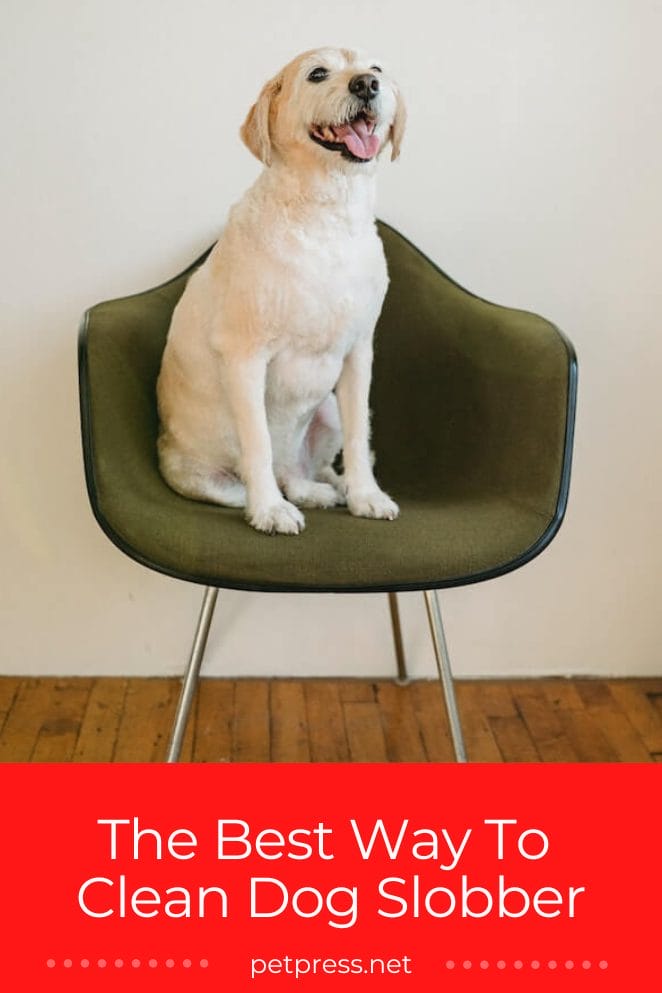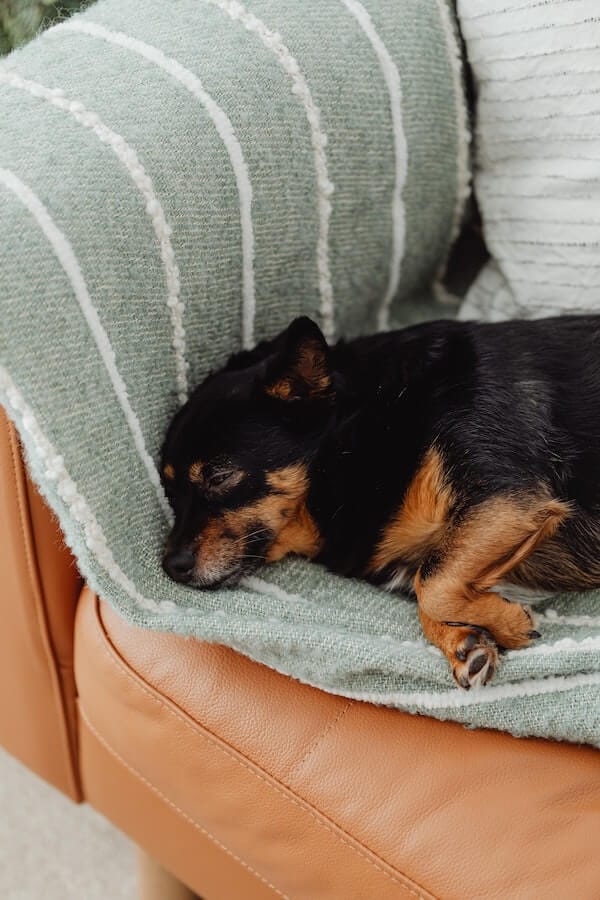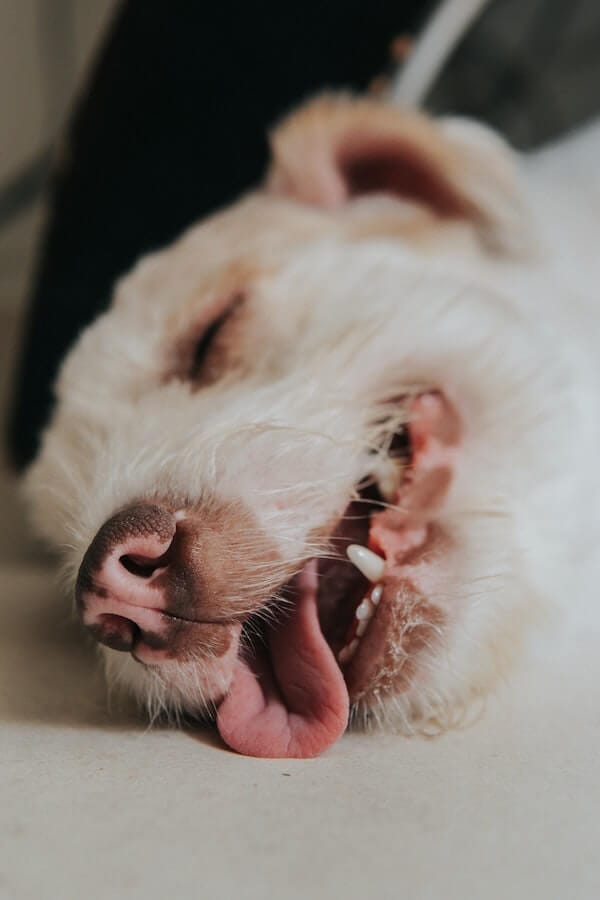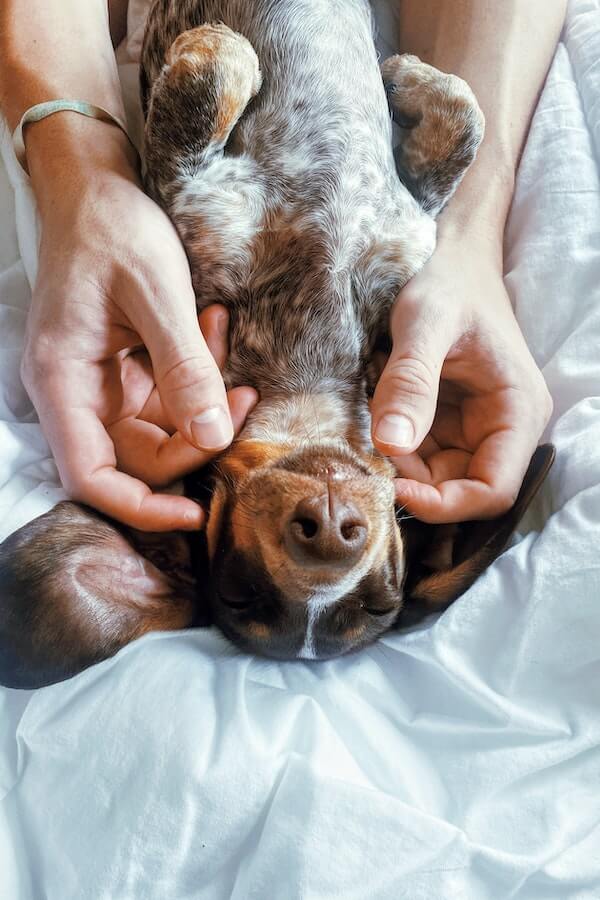
Ahhh, dog slobber. That special icky goo can be found gracing your favorite shirt, rug, or wall. The best way to clean it up is to act fast and grab a cloth.
Whether you have a puppy who loves to give sloppy kisses or a senior pup who just can’t help but drool – we’ve got some tips on the fastest and most effective way to tackle that sticky situation.
Read on for our guide on how best to get rid of dog slobber!
What makes a dog slobber?
Slobbering is a common thing in dogs and can be caused by a few different factors! For starters, some dogs just naturally have more drool than others.
Dogs with loose or extra skin around their mouths are also known for slobbering more than dogs with tight skin. And if your pup gets really excited or nervous, they may start to produce lots of salivae as well.
On top of that, certain breeds tend to slobber more than others – Bulldogs, in particular, are known for their drooling habits!
There’s even a condition called “epiphora” which causes excessive tearing from the eyes that leads to slobbering.

Is dog slobber bad?
Is dog slobber bad for humans? Well, if you’ve ever been licked by a pup, you know that it can leave behind a rather slimy residue. But is dog slobber bad?
Turns out, there’s no need to be concerned – as long as your pooch is healthy and happy! Dog saliva contains enzymes and proteins that help protect them from infection.
It’s also full of antibacterial properties too – so the chances of catching anything from your canine companion are incredibly low.
That said, some people may have allergies or sensitivities to certain proteins found in dogs’ saliva. It’s also possible that their slobber could cause staining on certain surfaces.
Does dog saliva leave stains?
Yes, dog saliva can leave stains! The reason is because of the bacteria in the saliva that break down proteins and carbohydrates.
This results in the formation of a stain that can be difficult to remove. It is also worth noting that dogs tend to groom themselves, which means they spread their saliva around their fur, leading to even more staining potential.
That being said, if you do get a dog-related stain on your carpets or furniture, don’t panic!
There are various methods for removing it safely and effectively – but always check with an expert first before attempting any removal yourself.
After all, you wouldn’t want to make matters worse! So while dog saliva can definitely cause stains, there are ways around it – so no need for a doggy disaster!

The best way to clean dog slobber
We all know those special moments when our furry friends over-express their love with slobber! It’s a sign of affection, but it can also be difficult to manage.
Well, have no fear! Here are five ways to clean up the mess:
1. White vinegar
This is a great choice for cleaning up slobber – simply mix one part white vinegar with three parts water, and use this solution to wipe down the affected area.
The acidity of the vinegar will break down any bacteria in the slobber, and it won’t leave any harsh residues behind.
2. Baking soda
This is another excellent option when cleaning slobber! Just pour some baking soda over the affected area.
Leave it on for 10 minutes, and then use a damp cloth to remove it. The alkaline nature of baking soda helps neutralize odors and sanitize surfaces while also gently scrubbing away dirt and debris.
3 Isopropyl alcohol
It can be used to quickly and effectively clean the slobber on surfaces. Just pour a small amount of isopropyl alcohol onto a cloth, and use it to wipe down the affected area.
The alcohol will break down any proteins in the slobber, leaving behind a clean surface.
4. Peroxide cleaner
It is also effective for cleaning up dog slobber – simply mix one part hydrogen peroxide with two parts water, and use this solution to wipe down the affected area.
The mild acidity of the peroxide helps break down any bacteria or germs that may be present in the slobber while also removing dirt and debris.

5. Enzyme cleaner
It can help remove tough stains from dog slobber. Just pour a small amount of enzyme cleaner onto a cloth, and use it to wipe down the affected area.
The enzymes in the cleaner will break down proteins in the slobber, leaving behind a clean surface that is free from bacteria or germs.
Conclusion
No matter how much you try to keep your pup from making messes, wet kisses are an inevitable part of owning a dog.
As long as you’re armed with a few supplies and a good sense of humor, cleaning up after your pooch doesn’t have to be such a chore!
So next time you find yourself face-to-face with some doggy drool, remember – just grab a cloth or napkin and get scrubbing.
Because at the end of the day, there’s nothing better than bonding with your furry friend – no matter how much of a mess they make!


GIPHY App Key not set. Please check settings